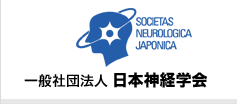- HOME
- Vol.56 No.12
- CLINICA NEUROL, 56: 827−831, 2016
- Vol.56 No.12 contents
Review
Correspondence and challenges as neurologists to Kumamoto Earthquakes in 2016
Makoto Nakajima, M.D., Ph.D.1)2), Nozomi Nakane, M.D.1), Kotaro Takamatsu, M.D., Ph.D.1)3), Satoshi Yamashita, M.D., Ph.D.1), Shunya Nakane, M.D., Ph.D.1)4), Taro Yamashita, M.D., Ph.D.1)3) and Yukio Ando, M.D., Ph.D.1)
1)Department of Neurology, Graduate School of Medical Sciences, Kumamoto University
2)Division of Research for Cerebrovascular Diseases, Kumamoto University Hospital
3)Organization Project of Practice System for Neurological Intractable Disease, Kumamoto University Hospital
4)Department of Molecular Neuroscience and Therapeutics, Kumamoto University Hospital
Kumamoto Earthquakes in 2016 severely affected medical circumstances and condition of each patient with neuromuscular diseases, in addition to having destroyed life circumstances of local residence. Number of neuro-muscular disease patients admitted to the Department of Neurology, Kumamoto University, the only university hospital in the prefecture, increased approximately twice compared to usual years. Most of the related facilities were able to admit emergency patients with neuro-muscular diseases although the hospital buildings were damaged in various degrees. A number of issues remained unsolved as to emergency contact system, securement of emergency beds for severe neuro-muscular diseases, and information system for these patients.
Full Text of this Article in Japanese PDF (1031K)
(CLINICA NEUROL, 56: 827−831, 2016)
key words: natural disaster, earthquake, neuro-muscular disease, intractable disease
(Received: 14-Sep-16)


